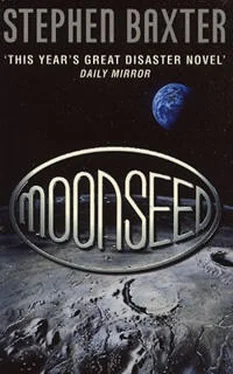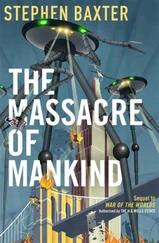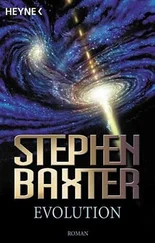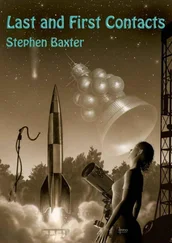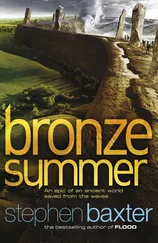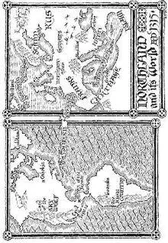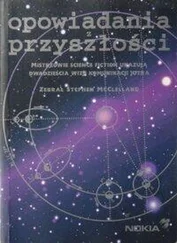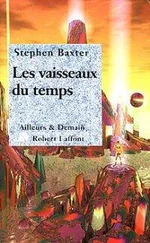He could sense his inertia, though.
It was hard to get moving; he had to thrust his body forward to get underway, as if he was walking into a wind. And to stop, he had to dig in his heels and lean back. He felt as if he was scuffing at this pulverized surface to which he was lightly bonded, trying to move his massive Earth bulk.
It was the separation of mass and inertia; the gravity here was so weak the effects of his mass were reduced, and inertia dominated. Sir Isaac Newton, you should have been up here. You understood all this, without having to fly to the Moon.
When he got tired, the stiffness of his suit actually helped. He could stop where he was and just slump inside his suit, and if he gave up the effort of trying to move the damn thing he could just rest against it.
When he looked across to Geena, she was loping along in much the same way. With her body dipping, stiff-legged, at every stride, she looked like a giraffe running across some Godforsaken piece of veldt, dipping into the swelling crater pits. He stifled a laugh.
…The surface was nothing but craters. Emphasize that: nothing but craters.
The main craters ranged in size, mostly from a foot across to maybe twenty yards, and from a few inches to maybe ten yards deep. It was like the frozen surface of some ocean, shaped by wavelike swells of a characteristic length and spacing.
But there were smaller pits as well, right down to zap pits on every rock he picked up, and he knew that if he took a glass to the fragments of regolith he’d find more craters right down to the limits of visibility, the rocks themselves like little Moons, as if this was a fractal landscape.
After four billion years of incessant pounding, there wasn’t a square inch that hadn’t been pulverized and racked up into a saucer-shaped dip of one size or another, not a footfall but where he crunched on regolith, a flour of pulverized rock. The terrain was just saturated, like the desiccated remnant of some Civil War battlefield.
He focused on the experience: the soapy feel of the fresh regolith, the gentle swell of the surface. As he loped across the land he might as well have been on the surface of some ocean, rolling quietly.
…And at Aristarchus Base, Rover tracks and footprints converged on the truncated base of the abandoned Lunar Module. The LM formed the centre of a circle of scuffed regolith, littered with gear.
Geena walked respectfully up to the old LM. It was a squat box on legs, a little taller than she was. There was a ladder fixed to the front leg; when she ran a gloved hand over it she found dust clinging to its rungs, left by departing feet, more than thirty years ago.
The gold-coloured Kevlar insulation on the descent stage was discoloured, and in some places it had split open and peeled back. Geena tried to smooth it back with her gloved hand, but it just crumbled under her touch. The bird was evidently thoroughly irradiated. The paint had turned to tan, and where she looked more closely she could see tiny micrometeorite pits, little craters dug into the paintwork. Another million years of this erosion and there would be nothing left of the Apollo.
She looked for Henry. He was studying the ALSEP science station that the astronauts had set up. She loped over to join him.
The instruments were laid out in a star-shape over an inert patch of the Moon, and connected by gold-coloured cabling to a central telemetry transmitter and a power plant — a thermoelectric nuclear generator, now long inert. Henry pointed out the sights like a tourist guide. Here was the seismometer, like a paint can on top of a silver drop cloth. This irregular ball in a squat box on legs must be the solar wind spectrometer. Three booms, spread out like the petals of a flower, made up the lunar surface magnetometer. And so on. All the instruments were boxes covered by gold-coloured insulation and white paint, covered with dust from long-gone astronaut footsteps, now blistered by years of sunlight.
There were packing brackets everywhere, dumped on the closely trodden ground.
When she turned away, she tripped on an ALSEP cable.
She didn’t even know it; Henry had to tell her. She couldn’t see her own feet as she walked, because of the chest-mounted control unit in her way, and she couldn’t even feel the cable through the inflated layers of her suit. The cable itself hadn’t unrolled properly. It seemed to have kept a kind of “memory” of being rolled, and once unrolled it wouldn’t lie flat, in one-sixth G.
Near the LM was much evidence of departure. The surface was littered by exhausted lithium hydroxide canisters and LM armrests, two abandoned backpacks, urine bags and food packs: garbage thrown out of the LM, the detritus of three brief days of exploration.
And the LM was surrounded by glittering fragments, for its foil insulation had been split and scattered by the blast of the departed ascent stage’s engine. There was a new ray system, streaks of dust which overlay the footprints.
On a rise three hundred feet away sat the Lunar Rover, with its camera blindly pointing to a sky into which its masters had disappeared.
Perhaps fifty yards from the LM, a US flag stood on its pole, held stiffly out on the windless Moon by a piece of wire. It had fluttered only once, as the brief blast of the LM’s ascent stage engine had rushed over it, and now it was tipped over, at an angle of thirty or forty degrees to the vertical.
Geena loped over to the flag.
She got hold of the staff, raised it straight, and tried to push it into the regolith. The staff would go in four or five inches easily, but then she came up against stiff resistance. Still, she managed to balance it, almost upright.
The relentless beating of sunlight had worn away at the fabric, and its colours — the red stripes, the blue star field — were no longer factory-bright. But the flag was the most colourful object on the Moon.
When she turned away from the flag, she saw a pattern in the dust. In the low sunlight she couldn’t make out what it was, and she walked around it.
A single line of footsteps led to this patch in the regolith, then turned back. And here was the object of that minor expedition: a name, written in the lunar dust, by a gloved finger. TRACY. A name written up here so it would last forever, on the unchanging lunar surface. He — Jays or Tom — had thought nobody would ever see this.
She shivered. Maybe it was a feeling she was walking through a graveyard. Or maybe it was exultation. After all, she was here. We can still do it, by God. We got here, just like before.
She turned, taking care not to spray dust over the scrawled name, and walked away.
The second Shoemaker, with their supplies, had come down clumsily. One of its four legs had settled into a nasty pit of a crater, and the whole thing was tilted at maybe ten degrees to the horizontal. But when Geena hopped up to the platform to check its systems, it looked otherwise intact.
The Shoemaker looked identical to their own, except that its upper surface was covered with a glittering Kevlar insulation blanket. Geena pulled that away; it fell oddly — low gravity, no air — it was stiff as moulded steel until it hit the ground, where it crumpled softly.
There were no crew standing frames here, Henry saw. Instead there was a pair of big, clam-shaped discs, maybe two yards across, pressed up against each other, with some kind of fabric compressed between them. There were equipment boxes and fuel tanks crowded around, black and white and gold.
Geena started to undo restraints on the boxes. “Help me,” she said. “We have to unload all of these.”
Clumsily, Henry hopped onto the platform, and bent to help her.
So, here he was, working on the Moon. It was harder than he expected. His Space Shuttle inner-tube suit was unbearably stiff at the waist and knees, and it took a lot of perseverance to lean over and bend. And the stiffness of his gloves made it hard to close a grip; he had to fight a monkey impulse to pull his gloves off and use his bare hands.
Читать дальше
Конец ознакомительного отрывка
Купить книгу
